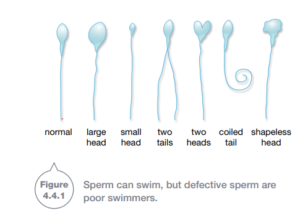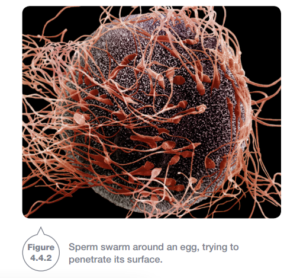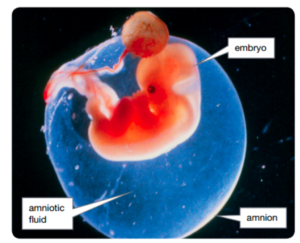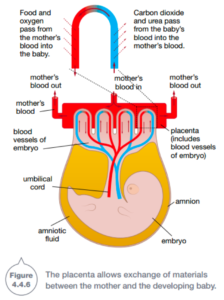Before you were born, you spent almost 9 months in your mother’s womb and were completely dependent on her for survival. In that time, all your organs such as your heart, brain and lungs were formed, and eventually a whole new and unique individual was formed- you!
Copulation
Copulation is the term for two individuals joining together for sexual reproduction. In humans this is called sexual intercourse. In sexual intercourse, the penis becomes stiff and erect. It is then inserted into the vagina. The stimulation causes sperms to be squeezed out of the penis in a process called ejaculation.
Ejaculation deposits several hundred million sperm near the cervix. Sperm can swim, propelled by their tail. Their energy source is sugar in the semen. However, not all sperm are healthy. There are many different ways a sperm can be defective

The sperm enter the uterus (womb) through the cervix. They swim through the uterus and into the Fallopian tube. Most sperm die along the way, leaving a few hundred healthy sperm to make it to the upper Fallopian tube to meet the egg. when they encounter the egg, the sperm swarm over its surface. One sperm manages to bury its head into the egg and the tail breaks off. The egg surface changes as soon as one sperm head makes it through to ensure that no more sperm can enter the egg. The egg is now fertilized.

Implantation
The first cell of the new individual is called a zygote. This begins to divide as it travels down the oviduct. The zygote keeps dividing until it forms a hollow bal of cells called a blastocyst. About 5 days after fertilization, the blastocyst reaches the uterus. The blastocyst burrows into the wall in a process known as implantation. It is at this point that the women is now pregnant.
Embryonic development
A baby takes about 38 weeks to develop from fertilization to birth. For the first 8 weeks the developing baby is referred to as an embryo. During this time, all the different types of cells, such as nerves, muscle and bone, are developing. These are being built into the different types of organs and systems of the bod .
In this critical period of development, the baby can be severely affected by many things. Things like smoking, alcohol and some drugs, have the potential to cause substantial damage. This is because any chemicals that affect cells could damage the embryo. This can cause deformities such as missing limbs and brain damage.


Amniotic fluid
The embryo floats in a fluid enclosed in a ‘balloon’ or membrane (thin later of living tissue) called the amnion. The amniotic fluid acts as a shock absorber, protecting the embryo from bumps. It also helps keep the embryo’s temperature constant.
The placenta
In its early development, the embryo is fed from the yolk sac and secretions (fluids) from the lining of the uterus. the yolk sack is similar to the yolk in a chicken egg.
The placenta later develops from branching structures called villi, which are on the outside of the blastocyte. The placenta is a highly folded series of membranes and blood vessels. it allows nutrients and oxygen from the mother to enter the baby. It also allows the embryo’s waste materials such as carbon dioxide to enter the mother’s blood so her body can remove it.

The placenta is connected to the embryo by the umbilical cord. This contains blood vessels from the embryo. The blood supplies of the mother and embryo do not mix together. They are kept apart by a membrane. The materials to be exchanged between the mother and the embryo pas across the membrane.

Fetal development
Most of major organs and systems have been formed when the embryo is about 9 weeks old. Its external appearance looks more human-like. It increases in size and the organs mature so they can function at birth. The developing baby is now classified as a fetus (also spelled fetus.)
Birth
Birth is part of the process called labor, which can last for a few hours to a day or more. The first sign of labor is pain in the abdomen. This is due to the uterus contracting and relaxing. The pains come and go periodically. Over time these gradually get stronger and more painful and come closer together. When the pains are regularly a few minutes apart, birth is not far away. The cervix relaxes and widens. this process is called dilation. The amniotic sac usually bursts, and then the baby’s head begins to pass through the cervix. Usually, the head goes through first. Then the baby is born. this may take from 10 mins to a few hours. The umbilical cord is cut and tied. A short time after the baby is born, the placenta is expelled from the mother.


